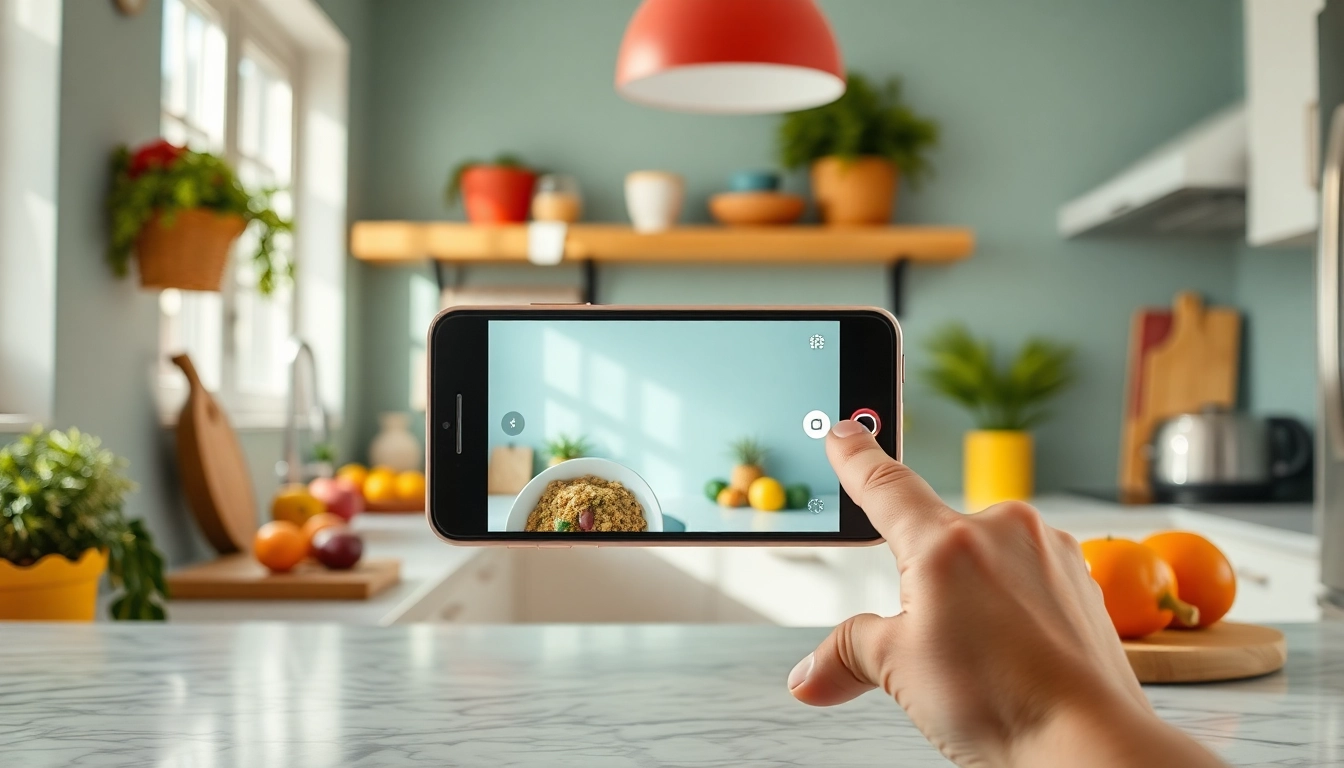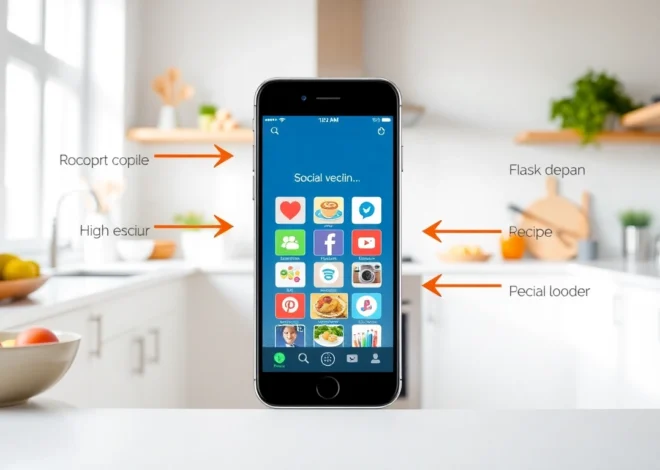
How to Save Recipes from Social Media and Elevate Your Cooking Game
Understanding the Importance of Saving Recipes from Social Media
In the digital age, social media platforms have revolutionized the way we discover and share recipes. From TikTok dance challenges to Instagram food photography, these platforms serve as treasure troves of culinary inspiration. However, the transient nature of social media content presents a significant challenge: how do you effectively save and organize recipes that catch your eye? Relying solely on screenshots or bookmarking posts can quickly become overwhelming and unmanageable. This is where robust tools and strategic methods come into play, enabling home cooks and culinary enthusiasts to preserve their favorite recipes for easy access and future use.
When you save recipes from social media, you ensure that valuable culinary ideas are not lost amidst the constant stream of new content. Saving recipes not only preserves your inspiration but also streamlines your cooking process, builds confidence, and fosters creativity in the kitchen. This section explores the core reasons why saving recipes from social media is an essential practice for modern cooking enthusiasts and provides insights into common challenges faced in managing online recipes.
Common Challenges in Managing Social Media Recipes
While social media platforms are abundant sources of innovative recipes, several hurdles hinder effective management and utilization of this content. These challenges include:
- Ephemeral Content: Many food posts, reels, and stories are designed to be temporary, disappearing after a set period, risking loss of valuable recipes.
- Disorganized Collection: Saving or bookmarking posts without proper categorization leads to chaotic collections that are difficult to navigate.
- Inconsistent Formats: Recipes shared via images, videos, or text snippets complicate extraction and standardization processes.
- Duplicate Content: Saving multiple versions or similar recipes without tracking can result in redundancy and clutter.
- Lack of Integration: Many recipe sources are isolated to individual platforms, making cross-platform management complex.
Overcoming these challenges requires intentional strategies and effective tools tailored for social media content management. Recognizing these hurdles is the first step toward developing a seamless system for saving and organizing recipes.
Why Saving Recipes Boosts Your Cooking Confidence
Having access to a well-organized collection of recipes from social media directly enhances your culinary confidence. When you save recipes systematically, you gain several benefits:
- Built-In Inspiration: A curated library of recipes provides constant motivation and new ideas, reducing the hesitation to try unfamiliar dishes.
- Reduced Anxiety: Knowing exactly where your recipes are and how to access them alleviates stress during meal preparation.
- Consistency and Reproducibility: Saved recipes enable you to recreate dishes accurately, improving taste and presentation over time.
- Personalization: Over time, you can customize recipes to suit your taste preferences, adding your unique touch to social media finds.
In essence, an organized recipe collection transforms fleeting online discoveries into reliable, accessible resources, empowering home cooks to approach new dishes with confidence and enthusiasm.
How Organized Recipes Improve Meal Planning
Efficient meal planning hinges on the accessibility and clarity of your recipe library. When your recipes are well-organized, meal preparation becomes a streamlined process that saves time and reduces stress. Some key advantages include:
- Ease of Navigation: Categorizing recipes by cuisine, dietary preferences, or meal types allows quick retrieval during busy weekdays.
- Meal Prepping Efficiency: Organized recipes facilitate planning weekly menus in advance, ensuring variety and balance.
- Shopping List Generation: Structured collections enable easy compilation of ingredients, minimizing forgetfulness and impulse purchases.
- Cost and Waste Reduction: By planning meals around stored recipes, you optimize ingredient use, reduce waste, and control grocery expenses.
Overall, a systematic approach to saving social media recipes transforms chaotic inspiration into actionable meal plans, significantly enhancing your cooking routine.
Best Tools and Apps to Save Recipes from Social Media Platforms
Top Features to Look for in a Recipe Saver App
Choosing the right application to save recipes from social media is critical for efficiency and ease of use. The ideal app should include the following features:
- Multi-Platform Importing: Ability to capture recipes from Instagram, TikTok, Facebook, YouTube, and websites seamlessly.
- Automatic Extraction: Tools that parse posts or videos to extract recipes, ingredients, and instructions automatically.
- Simple Sharing and Saving: Easy sharing options, such as sharing a post directly to the app through sharing features or browser extensions.
- Organizational Tools: Categorization, tagging, and search functionalities for efficient retrieval.
- Cross-Device Sync: Synchronization across smartphones, tablets, and desktops for flexibility and convenience.
- Customization: Options to add personal notes, modifications, or adjustments to saved recipes.
- Privacy and Security: Safe storage of your culinary data with privacy controls.
- Integration with Meal Planning: Ability to generate shopping lists, meal plans, or integrate with other kitchen apps.
Prioritizing these features ensures your recipe management system is comprehensive, efficient, and aligned with your cooking habits.
Comparison of Popular Recipe Saving Apps like Flavorish and Recipe Keeper
To help you select the best tool for your needs, here’s a detailed comparison of notable recipe saving apps:
| Feature / App | Flavorish | Recipe Keeper |
|---|---|---|
| Platform Compatibility | iOS, Android, Web | iOS, Android, Windows, Mac |
| Import Methods | Share recipes directly from social media; browser extension; manual entry | Manual entry; import PDFs/photos; web clipping |
| Unique Features | Auto-import from TikTok, Instagram, YouTube; sharing via links; meal planning | Cross-device synchronization; extensive organization; shopping lists |
| Pricing | Freemium model; premium for advanced features | One-time purchase or subscription options |
| Organization Capabilities | Tags, categories, search filters | Folders, tags, notes, search |
| Best For | Social media content integration, quick saving, meal planning | Detailed organization, cross-platform use, comprehensive management |
Choosing between these apps depends on your specific workflow. If you prioritize social media integration and meal planning, Flavorish offers a streamlined experience. For detailed organization across multiple devices, Recipe Keeper provides extensive functionality.
Step-by-Step Guide to Import Recipes from Instagram, TikTok, Facebook
- Using Sharing Features: Most social platforms enable sharing posts directly to compatible apps. Tap the share icon and select your recipe app if it appears in the options.
- Using Browser Extensions or Tools: Some apps offer browser extensions for saving recipes from web pages. When viewing a recipe, click the extension icon to import content directly into your library.
- Screen Capture and Parsing: For videos or images, some apps can extract text or ingredients automatically. Alternatively, manually copy the recipe details into your app.
- Manual Entry: When automation isn’t available, input the recipe details manually, ensuring proper categorization and tagging for easy future access.
- Using Dedicated Import Links or APIs: Certain platforms or apps support importing via specific links or APIs—check app documentation for detailed instructions.
These steps, combined with app-specific features, make the process efficient, enabling you to build a rich database of your favorite social media recipes with minimal effort.
Strategies for Effectively Organizing Your Social Media Recipe Collection
Creating Categories and Tags for Easy Access
Organizational efficiency begins with categorization. Implementing a systematic tagging system allows quick retrieval and personalized filtering. Best practices include:
- Meal Type: Breakfast, lunch, dinner, snacks, desserts.
- Cuisine: Italian, Mexican, vegetarian, vegan, gluten-free.
- Difficulty Level: Easy, intermediate, advanced.
- Preparation Time: Under 15 minutes, 30 minutes, over an hour.
- Special Dietary Needs: Keto, paleo, allergy-friendly.
Consistently applying tags to each recipe optimizes searchability and enhances your cooking planning efficiency. Incorporate color-coding or tagging hierarchies for further clarity.
Using Cloud Sync and Cross-Device Compatibility
Ensuring your recipes are accessible across all devices prevents fragmentation and enhances flexibility. Cloud-based apps that sync automatically allow you to access your collection whether you’re on a smartphone, tablet, or desktop. To maximize this:
- Choose apps with reliable synchronization features.
- Regularly verify sync status to prevent data loss.
- Backup your recipe folder periodically to avoid unforeseen issues.
- Leverage browser extensions or desktop applications for faster uploads and edits.
This approach keeps your collection consistent, up-to-date, and ready for whenever inspiration strikes.
Maintaining and Updating Your Recipe Library Regularly
An active maintenance routine preserves the value of your curated recipes. Schedule periodic reviews to:
- Remove outdated or duplicate recipes.
- Revise recipes based on personal taste or new techniques.
- Add new recipes as you discover them.
- Organize seasonal or thematic collections.
Adopting practices like weekly or monthly reviews ensures your recipe library remains current, relevant, and inspiring.
Enhancing Your Cooking Experience with Saved Recipes
Transforming Saved Recipes into Weekly Meal Plans
A strategic approach involves converting your organized recipes into weekly meal plans. For effective planning:
- Group recipes by meal type and prep time for balanced menus.
- Incorporate a mix of new and familiar dishes to maintain variety.
- Use your app’s meal planning features to schedule and automate meal ideas.
- Generate shopping lists from planned recipes to streamline grocery shopping.
This not only saves time but also ensures nutritional diversity and reduces decision fatigue.
Sharing Your Favorite Recipes with Family and Friends
Sharing your curated recipes fosters community and encourages culinary experimentation. Strategies include:
- Creating digital cookbooks or newsletters.
- Using social media or dedicated recipe sharing platforms.
- Organizing themed cooking sessions based on your saved recipes.
- Providing access to collaborative collections for family or roommates.
This promotes engagement, feedback, and continuous improvement of your collection.
Implementing Feedback and Making Adjustments
Cooking is an evolving art. Regularly refine recipes based on taste tests and feedback. Tips include:
- Adding notes for modifications or ingredient substitutions.
- Documenting successful tweaks for future reference.
- Engaging with social media communities for ideas and criticism.
- Tracking modifications that lead to better outcomes.
Continuous updates transform your recipe collection into a dynamic, personalized culinary resource.
Future Trends in Saving and Using Recipes from Social Media
AI and Automation in Recipe Organization
The future of recipe management is set to be revolutionized by artificial intelligence. AI-driven tools will automatically:
- Parse recipe content from videos or images, extracting ingredients and instructions.
- Personalize recipe recommendations based on your preferences and cooking history.
- Predict ingredient substitutes to accommodate dietary restrictions.
- Track and suggest improvements based on your adjustment patterns.
This automation reduces manual effort and enhances the precision and personalization of your culinary library.
Community Sharing and Collaboration Features
Next-generation recipe apps will foster community engagement through features such as:
- Shared collections among friends or online communities.
- Rating and commenting systems for feedback and improvements.
- Collaborative cooking plans and recipe editing.
- Integration with social media for seamless sharing and discovery.
This collaborative approach broadens culinary horizons and makes recipe management more engaging.
Integrating with Smart Kitchen Devices for a Seamless Cooking Experience
Smart kitchen appliances — such as connected ovens, sous-vide machines, and smart scales — will link directly with your recipe apps. Future integrations will enable:
- Automatic adjustments of appliance settings based on recipes.
- Step-by-step guided cooking with real-time feedback.
- Inventory tracking and automatic shopping list updates based on meal plans.
- Voice-controlled recipe navigation for hands-free cooking.
This synergy will elevate your cooking experience, making it more efficient, precise, and enjoyable.

